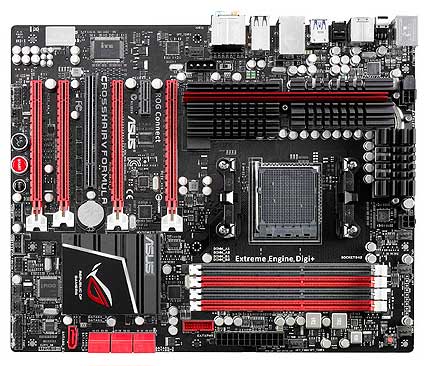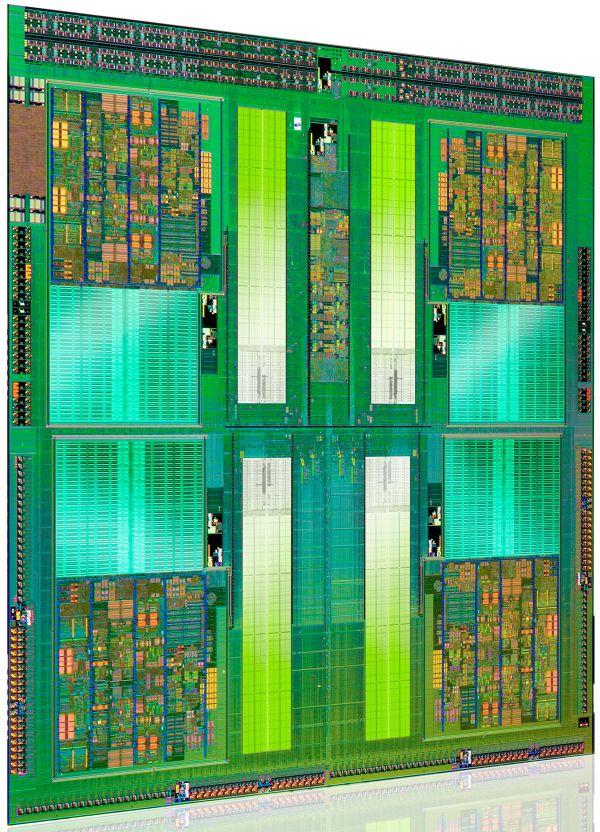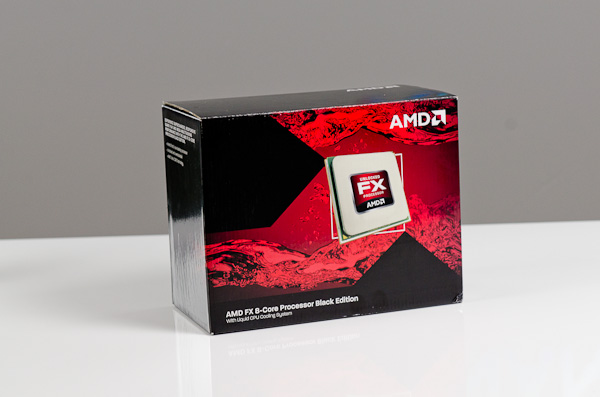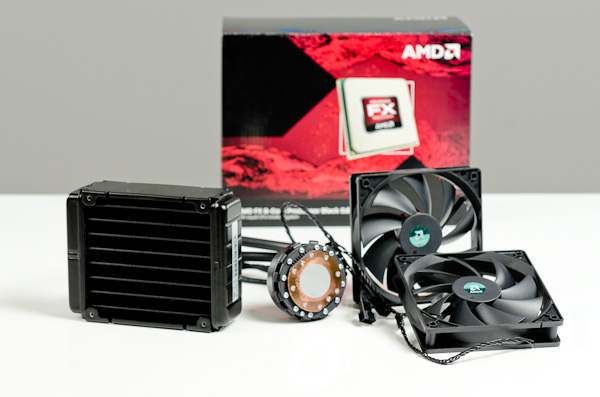The Bulldozer Review: AMD FX-8150 Tested
by Anand Lal Shimpi on October 12, 2011 1:27 AM ESTAMD has been trailing Intel in the x86 performance space for years now. Ever since the introduction of the first Core 2 processors in 2006, AMD hasn't been able to recover and return to the heyday of the Athlon 64 and Athlon 64 X2. Instead the company has remained relevant by driving costs down and competing largely in the sub-$200 microprocessor space. AMD's ability to hold on was largely due to its more-cores-for-less strategy. Thanks to aggressive pricing on its triple and hexa-core parts, for users who needed tons of cores, AMD has been delivering a lot of value over the past couple of years.
Recently however Intel has been able to drive its per-core performance up with Sandy Bridge, where it's becoming increasingly difficult to recommend AMD alternatives with higher core counts. The heavily threaded desktop niche is tough to sell to, particularly when you force users to take a significant hit on single threaded performance in order to achieve value there. For a while now AMD has needed a brand new architecture, something that could lead to dominance in heavily threaded workloads while addressing its deficiencies in lightly threaded consumer workloads. After much waiting, we get that new architecture today. Bulldozer is here.
It's branded the AMD FX processor and it's only available in a single die configuration. Measuring 315mm2 and weighing in at around 2 billion transistors (that's nearly GPU-sized fellas), Bulldozer isn't that much smaller than existing 45nm 6-core Phenom II designs despite being built on Global Foundries' 32nm SOI process. Both die area and transistor count are up significantly over Sandy Bridge, which on Intel's 32nm HKMG process is only 995M transistors with a die size of 216mm2. This is one big chip.
| CPU Specification Comparison | ||||||||
| CPU | Manufacturing Process | Cores | Transistor Count | Die Size | ||||
| AMD Bulldozer 8C | 32nm | 8 | 1.2B* | 315mm2 | ||||
| AMD Thuban 6C | 45nm | 6 | 904M | 346mm2 | ||||
| AMD Deneb 4C | 45nm | 4 | 758M | 258mm2 | ||||
| Intel Gulftown 6C | 32nm | 6 | 1.17B | 240mm2 | ||||
| Intel Nehalem/Bloomfield 4C | 45nm | 4 | 731M | 263mm2 | ||||
| Intel Sandy Bridge 4C | 32nm | 4 | 995M | 216mm2 | ||||
| Intel Lynnfield 4C | 45nm | 4 | 774M | 296mm2 | ||||
| Intel Clarkdale 2C | 32nm | 2 | 384M | 81mm2 | ||||
| Intel Sandy Bridge 2C (GT1) | 32nm | 2 | 504M | 131mm2 | ||||
| Intel Sandy Bridge 2C (GT2) | 32nm | 2 | 624M | 149mm2 | ||||
Update: AMD originally told us Bulldozer was a 2B transistor chip. It has since told us that the 8C Bulldozer is actually 1.2B transistors. The die size is still accurate at 315mm2.
Architecturally Bulldozer is a significant departure from anything we've ever seen before. We'll go into greater detail later on in this piece, but the building block in AMD's latest architecture is the Bulldozer module. Each module features two integer cores and a shared floating point core. FP hardware is larger and used less frequently in desktop (and server workloads), so AMD decided to share it between every two cores rather than offer a 1:1 ratio between int/fp cores on Bulldozer. AMD advertises Bulldozer based FX parts based on the number of integer cores. Thus a two module Bulldozer CPU, has four integer cores (and 2 FP cores) and is thus sold as a quad-core CPU. A four module Bulldozer part with eight integer cores is called an eight-core CPU. There are obvious implications from a performance standpoint, but we'll get to those shortly.
The FX Lineup
There are a total of 7 AMD FX CPUs that AMD is announcing today, although only four are slated for near-term availability.
| CPU Specification Comparison | |||||||||
| Processor | Cores | Clock Speed | Max Turbo | NB Clock | L2 Cache | TDP | Price | ||
| AMD FX-8150 | 8 | 3.6GHz | 4.2GHz | 2.2GHz | 8MB | 125W | $245 | ||
| AMD FX-8120 | 8 | 3.1GHz | 4.0GHz | 2.2GHz | 8MB | 95W/125W | $205 | ||
| AMD FX-8100* | 8 | 2.8GHz | 3.7GHz | 2GHz | 8MB | 95W | N/A | ||
| AMD FX-6100 | 6 | 3.3GHz | 3.9GHz | 2GHz | 6MB | 95W | $165 | ||
| AMD FX-4170* | 4 | 4.2GHz | 4.3GHz | 2.2GHz | 4MB | 125W | N/A | ||
| AMD FX-B4150* | 4 | 3.8GHz | 4GHz | 2.2GHz | 4MB | 95W | N/A | ||
| AMD FX-4100 | 4 | 3.6GHz | 3.8GHz | 2GHz | 4MB | 95W | $115 | ||
| AMD Phenom II X6 1100T | 6 | 3.2GHz | 3.6GHz | 2GHz | 3MB | 125W | $190 | ||
| AMD Phenom II X4 980 | 4 | 3.7GHz | N/A | 2GHz | 2MB | 125W | $170 | ||
The FX-8150, 8120, 6100 and 4100 are what's launching today. The first digit in AMD's FX model numbers indicates the number of cores with the 8150 and 8120 boasting eight, while the 6100 only has six active integer cores (three Bulldozer modules). The FX-4100 features four integer cores. L2 cache scales with core count (2MB per module), while the L3 cache size remains fixed at 8MB regardless of SKU.
North Bridge and L3 cache frequency alternate between 2.0GHz and 2.2GHz depending on the part. TDPs range between 95W and 125W as well, with the FX-8120 being offered in both 125W and 95W versions.
There's only a single Bulldozer die. The 6 and 4 core versions simply feature cores disabled on the die. AMD insists this time around, core unlocking won't be possible on these harvested parts.
The huge gap in clock speed between the 8120 and 8150 are troubling. Typically we see linear frequency graduations but the fact that there's a 16% difference between these two SKUs seems to point to process problems limiting yield at higher frequencies—at least for the 8-core version.
Outside of the quad-core and hex-core Bulldozer pats, the only other FX processor able to exceed the 3.3GHz clock speed of the Phenom II X6 1100T is the 8150. And if you include quad-core Phenom II parts in the mix, only two Bulldozer parts ship at a higher stock frequency than the Phenom II X4 980. Granted Turbo Core will help push frequencies even higher, but these low base frequencies are troubling. For an architecture that was designed to scale to clock speeds 30% higher than its predecessor, Bulldozer doesn't seem to be coming anywhere close.
The entire FX lineup ships unlocked, which allows for some easy overclocking as you'll see soon enough.
Motherboard Compatibility
AMD is certifying its FX processors for use on Socket-AM3+ motherboards. Owners of standard AM3 motherboards may be out of luck, although motherboard manufacturers can choose to certify their boards for use with Bulldozer if they wish to do so. From AMD's perspective however, only AM3+ motherboards with BIOS/UEFI support for Bulldozer are officially supported.
All existing AM2/AM2+/AM3/AM3+ heatsinks should work with the FX processor; they simply need to be rated for the TDP of the processor you're looking to cool.

For this review, AMD supplied us with ASUS' Crosshair V Formula AM3+ motherboard based on AMD's 990FX chipset.
AMD does offer six 6Gbps SATA ports on its 990FX chipset, a significant upgrade from the two 6Gbps ports on Intel's 6-series chipsets. Unbuffered ECC memory is also supported for those who desire the added security, once again a feature not supported on Intel's consumer grade 6-series chipsets.
Despite AMD's trend towards releasing APUs with integrated GPUs (thus requiring a new socket), AMD insists that the AM3+ platform will live to see one more processor generation before it's retired.
AMD's Liquid CPU Cooling System
Alongside its new FX processors AMD is introducing its first branded liquid cooling system manufactured by Asetek.
AMD's cooling system is similar to other offerings from companies like Antec and Corsair. The system is self contained, you never have to worry about adding any more liquid to it.
Attach the cooling module to your CPU socket via a simple bracket, and affix the radiator to your case and you're good to go. The radiator is cooled via two 120mm fans, also included in the box.
AMD doesn't have an exact idea on pricing or availability of its liquid cooling solution, but I'm told to expect it to be around $100 once available. My sample actually arrived less than 12 hours ago, so expect a follow up with performance analysis later this week.
The Roadmap
For the first time in far too long, AMD is actually being very forthcoming about its future plans. At a recent tech day about Bulldozer, AMD laid out its CPU core roadmap through 2014. The code names are below:
Piledriver you already know about, it's at the heart of Trinity, which is the 2—4 core APU due out in early 2012. Piledriver will increase CPU core performance by around 10—15% over Bulldozer, although it will initially appear in a lower performance segment. Remember that final generation of AM3+ CPU I mentioned earlier? I fully expect that to be a GPU-less Piledriver CPU due out sometime in 2012.
Steamroller will follow in 2013, again improving performance (at the core level) by around 10—15%. Excavator will do the same in 2014. AMD believes that these performance increases will be sufficient to keep up with Intel over time, however I'll let you be the judge of that once we get to the Bulldozer performance numbers.
The other thing to note about AMD's roadmap is it effectively puts the x86 business on an annual cadence, in line with what we've seen from the AMD GPU folks. Although AMD isn't talking about what process nodes to expect all of these cores at, it looks like AMD will finally have an answer to Intel's tick-tock release schedule moving forward.























430 Comments
View All Comments
GatorLord - Thursday, October 13, 2011 - link
OMG! That is some seriously funny sh1t! I thought I'd blow a kidney or something...I'm trying to type this though the tears I was laughing so hard!I800C0LLECT - Thursday, October 13, 2011 - link
I think majority of these comments show just how fickle consumerism is in America. Anyways, tomorrow's vision vs. current real world performance is the rats nest.They obviously pushed this towards server markets. Maybe that's why there wasn't much fanfare with the marketing gurus?
The performance obviously doesn't reach out to the niche market of computer gamers. Let's see how lucrative this becomes if AMD is able to crack the not so trendy server market. Those guys don't like to break old habits. Stability is kind of a big deal.
I can also see how this design creates a plug and play product for many different markets. The downside to that is it's one design for all which has already proven inefficient for Gamers. But what about consumer electronics? They generally want cheap and simple. Performance be damned.
Interesting hand AMD.
CharlieBBarkin - Thursday, October 13, 2011 - link
I'd hate to break it to you, but even though Bulldozer was targeted towards the server market, it is a complete non-starter in that segment. Look at the power consumption of the Bulldozer. It's off the charts, and it has less raw performance than Intel chips. I can't imagine any system administrator dumb enough to install Bulldozer chips into any sort of compute or server farm. Why would a farm waste money powering and cooling Bulldozer chips when it would be so much cheaper and higher performance to just use Intel CPUs?silverblue - Friday, October 14, 2011 - link
Could just be the ASUS board causing the issues. At any rate, once you overclock past a certain point, power usage just accelerates madly, and you're not going to see these sorts of high frequencies on the server anyway so the point is rather moot. Additionally, with servers, they're a little more focused on power efficiency than with client machines. Magny Cours was a 12-core CPU and the 6176 had a TDP of 105W if I'm correct, so despite its 2.3GHz clock speed, that's not too bad considering.luckylinux - Thursday, October 13, 2011 - link
I also have waited for a long time to finally see if I could replace my phenom ii x4 and x6 with the new super bulldozer. Nevertheless I'm pretty disappointed by the raw performance of this new chip.I began using amd products about one year and a half ago, so I'm not really an amd fanboy ... however began to like them for their choice of not doing the intel shitty hobby of switching 3 sockets every 2 years.
Took an athlon x2, x4, phenom ii x6 and two E-350 from them and very happy for what you get (a bang for your money).
However ... looking at the athlons (and even more the phenoms) power consumption is rather disappointing compared to sandy bridge cpus which I recently bought (yeah, I did not want to leave a 24/7 machine on drawing 60 Watts at idle when SB idles at much less with their power gates tech).
Bulldozer power gates are rather disappointing. Hoped for much higher frequency or lower power consumption at load due to the transistor shrink. And 2B transistors ????? Seeing as some compenents are shared across cores I think this is WAY too much !
BUT one thing deserves to be said. In my case (but that's just me, eh) I wanted a multicore processor which supported both AES-NI and ECC memory. For ECC you can either take an ASUS AM3(+) motherboard (about 120$ the cheapests of am3+), either a 1366 or a 1155 C202/4/6, which costs about 260$ at least ! For AES-NI the only alternative seemed up til now to go with Xeon which cost quite a bit more. Furthermore Xeon cpus are not so easily to get your hands on.
I think that no one gave credit for their efforts to implement AES-NI. If you want a home server that's a very appreciated bonus.
Although I can understand why many of the users here are angry at the new chip because it doesn't perform very well in gaming, the choice of amd to disregard single threaded apps in itself is quite good. In a market where in a few years we'll see 40+ cores on a single desktop CPU (well, in server that'll be next year with Komodo !) what the heck can you obtain with a single core ? Idling 39 cores to speed up one core to 8GHz (assuming that's electrically possible). Silicon dictates the limits on the frequency you can use in your chip. AMD understood this long ago, when intel and their S775 tried to surpass the 3GHz wall with the Pentium IV. Since we're going in a multithread world, 40 x 4GHz (something like that at 22 or 10nm I think) will perform WAY better that 1 x 8GHz (provided that apps are well developed). Why INTEL does not understand this (S2011 provides only 6 cores !) ? However with 2B transistors a few more cores could've been added :D AMD has to work better at power consumption. Instead of clock per clock performance they focus on # of cores which is what the future is ! You will say that intel's performance per core is almost the double, but amd cores are twice so ... How long will intel continue to release quads when amd'll get to sixteen ? If you're an intel fanboy just say that amd BD is shit, but I think this kind of strategy is going to pay in the long term. In fact amd manages to put more cores in a single die, whereas intel is always 2 cores behind. That alone shows that AMD engineers aren't idiots !
luckylinux - Thursday, October 13, 2011 - link
EDIT: Komodo will have 20cores (only :D)I800C0LLECT - Thursday, October 13, 2011 - link
More cores?I guess I was trying to infer that as fabrication processes we shrink to 22nm, etc. How much over head is reduced by plugging in a few more cores vs. new design and architecture?
I'm wondering if AMD just set the foundation for something big?
Seems like they bet on software making some leaps and bounds.
wolfman3k5 - Thursday, October 13, 2011 - link
It's finally here! I have been waiting for one of these. It's another Hitler Video, this time it's about Bulldozer. Funny as hell...The video can be found here: http://www.youtube.com/watch?v=SArxcnpXStE
just4U - Thursday, October 13, 2011 - link
Ok, in several reviews now I've heard about the lacklustre single threaded performance.. Just how bad is it? If you had to compare it to another cpu out there which intel and which amd cput would it compare to?Desperad@ - Thursday, October 13, 2011 - link
Promises of AMDhttp://blogs.amd.com/work/2010/08/23/%E2%80%9Dbull...
http://blogs.amd.com/work/2010/08/30/bulldozer-20-...
http://blogs.amd.com/work/2010/09/13/bulldozer-20-...
http://sites.amd.com/us/promo/processors/Pages/ope...